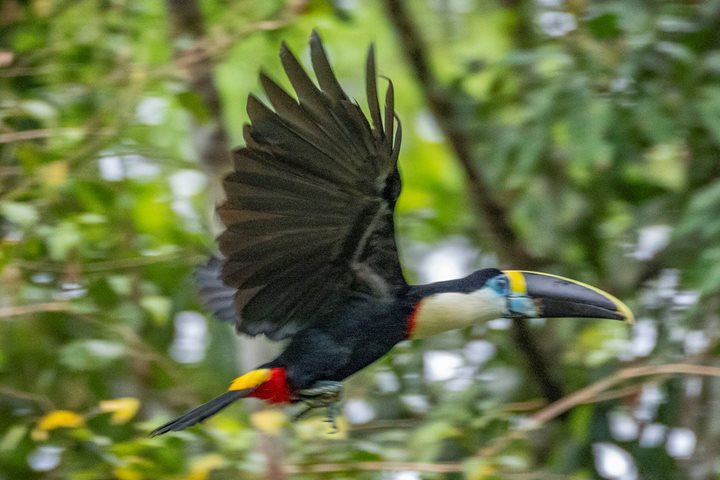This morning after our traditional wake-up knock-knock “call,” we boarded our skiff boats to go out and explore Atun Poza Lake and its surroundings. Good weather gave us ideal conditions to look for wildlife. We were outside for almost two hours, and we were fascinated with what nature gave to us. Some squirrel and monk saki monkey troops, three-toed sloths, and many bird species were seen.
Our friendly and hard-working Delfin II crew surprised all of us with a breakfast on the skiffs! It consisted of not just coffee and simple food, but we had rain forest fruits juices and flavors. We had the thrill of having our first meal of the day served in the rain forest in the most fashionable way, with plates and fabric napkins included.
On our way back on board we made a quick stop to visit a small settlement, which at this time of the year is flooded. Once aboard and before lunch we had an amusing activity, a cooking lesson of a regional dish called juanes.
The Pacaya–Samiria National Reserve is one of the largest protected areas in Peru with an area of more than 5 million acres (7,700 ml², 20,800 km²). In comparison this huge reserve is equivalent in size to the state of New Jersey. The reserve is also the largest protected seasonal flooded forest in South America. The reserve is made up of three hydrographical basins: the Samiria River drainage, the Pacaya River drainage, and the Yanayacu-Pucate drainage.
Early in the afternoon we headed to the Pacaya River. In this area we observed several bird species like egrets, hawks, parrots, and storks. In addition to the many animal species, which included pink river dolphins, we enjoyed the beautiful landscapes of the area and a spectacular sunset.
Late in the evening at around 18:15 we came back on board. We had a wonderful mix—the feeling of well-being and the certainty that we were part of the intricate but magical complexity of the Upper Amazon region in Peru.







